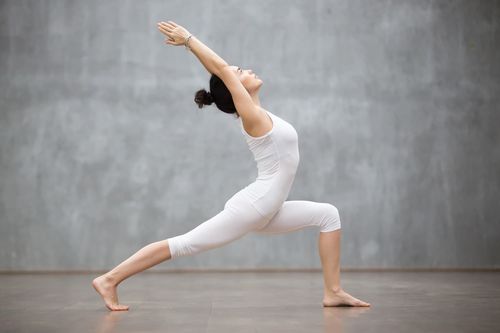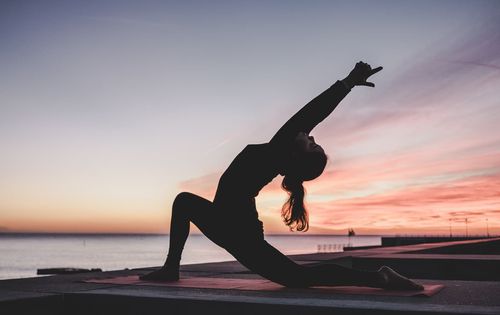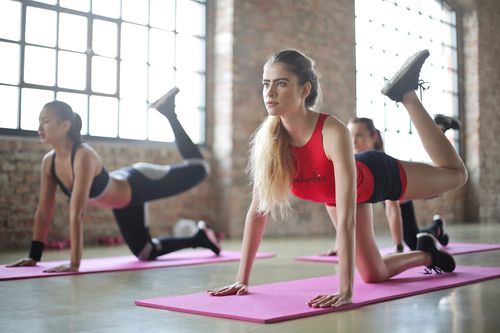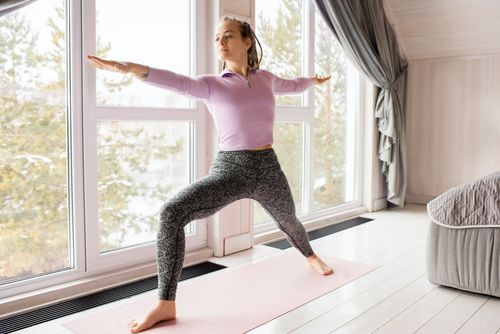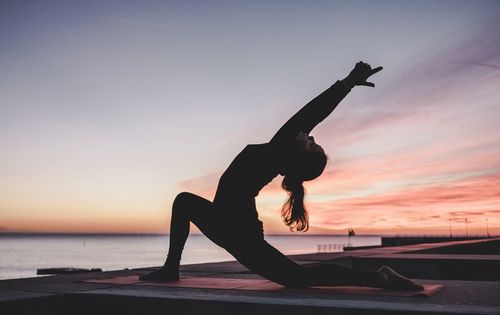What Is Bikram Yoga?
Bikram Yoga is a yoga system consisting of a series of 26 poses and two breathing exercises performed in a heated room approximately 33-40 °C. It was developed by yoga teacher Bikram Choudhury. The various yoga poses are demanding, but performing them can make the muscles become more pliant and the heat can cause sweating, which helps purify the body.
The reasons for the importance of heating the room include:
- Greater body flexibility
- Lesser chance of muscle strains
- Lesser chance of injuries
- Promotes body cleansing and purification
- Builds stamina and endurance

How Does Bikram Yoga Work?
A Bikram yoga class begins with a breathing exercise to get oxygen to the muscles and organs of the body and increase its energy levels, priming it for the series of 26 postures to be carried out in a hot room. Each pose works with the specific muscles, joints, and ligaments that are needed for the next pose. The class flows this way and ends with another breathing exercise to help eliminate toxins from the body.
The various poses used in Bikram yoga are designed to act as a tourniquet – massaging the internal organs while stimulating the nervous system and cleansing the cardiovascular system. As a matter of fact, Bikram yoga works on every system within the body, which makes it a low-impact, whole-body workout.
Bikram Yoga can be performed by people of all ages and abilities. Classes are held with a yoga teacher who acts as a guide. Also, no special equipment is needed for Bikram Yoga, except for a mat and suitable clothing.
What Are the Benefits of Bikram Yoga?
Bikram yoga strengthens the connection between the physical, mental and emotional bodies, allowing them to work together instead of against each other. This leads to several health benefits which include:
- Assists in detoxifying the body
- Improves the circulatory system
- Helps burn body fat more effectively
- Speeds up the metabolism
- Improves a person's willpower, determination, and self-control
- Strengthens the cardiovascular system
- Reshapes the body
- Reduces injuries
- Reduces stress
- Increases energy levels
- Strengthens the back, thus, reducing back pain
- Improves breathing
- Helps with chronic illnesses or injuries
- Assists weight loss
- Improves body posture
- Cultivate self-love
- Develops a positive perspective on life
- Improves sleep quality
- Improves focus and concentration
The 26 Bikram Yoga Poses
Each of the 26 postures in Bikram yoga benefits an organ, nerve or tissue in the body. So when they're performed together, they bring about a transformational experience for the mind, body and emotions. Here's the list of the 26 poses and their respective health benefits:
- Pranayama (Standing Deep Breathing) - helps prevent respiratory problems
- Ardha-Chandrāsana with Pādahastāsana (Half Moon Pose with Hands To Feet Pose) - helps strengthen core muscles along with improving the spine's flexibility
- Utkatasana (Awkward Pose) - helps shape and tone legs
- Garudasana (Eagle Pose) - opens up the 14 largest joints
- Dandayamana-Janushirasana (Standing Head To Knee Pose) - improves the flexibility of the sciatic nerve and may strengthen the hamstrings and other leg muscles
- Dandayamana-Dhanurasana (Standing Bow Pose) - helps develop balance while potentially firming the abdominal wall and upper thighs
- Tuladandasana (Balancing Stick Pose) - increases circulation, especially to the heart and the brain
- Dandayamana Bibhaktapada Paschimottanasana (Standing Separate Leg Stretching Pose) - helps strengthen and stretch the sciatic nerves and tendons in the legs
- Trikonasana (Triangle Pose) - helps in improving muscles while alleviating lower back pain and crooked spines
- Dandayamana Bibhaktapada Janushirasana (Standing Separate Leg Head To Knee Pose) - helps trim the lower body
- Tadasana (Tree Pose) - helps improve body posture, balance and flexibility while strengthening the oblique muscles
- Padangustasana (Toe Stand Pose) - helps strengthen knees, feet, and ankles
- Savasana (Corpse Pose) - increases mindfulness
- Pavanamuktasana (Wind Removing Pose) - helps in strengthening the abdomen, arms, and thighs while improving flexibility of the hip
- Pada-Hastasana (Sit-up) - helps in increasing the flexibility to stretch the spine
- Bhujangasana (Cobra Pose) - helps in strengthening the spine and may relieve pain from arthritis, scoliosis, and menstrual disorders
- Salabhasana (Locust Pose) - helps in strengthening the upper spine and legs
- Poorna Salabhasana (Full Locust Pose) - helps in relieving pain from scoliosis and slipped discs while increasing the elasticity of the rib cage and strengthening the middle spine
- Dhanurasana (Bow Pose) - helps in increasing fluid circulation and spine strength while opening up the rib cage to expand lungs
- Supta Vajrasana (Fixed Firm Pose) - helps in improving strength and flexibility of the lower spine, hips, knees, and ankle joints while increasing fluid circulation that may relieve pain
- Ardha Kurmasana (Half Tortoise Pose) - helps in stretching the lower part of the lungs while relieving the tension in the shoulders and neck
- Ustrasana (Camel Pose) - helps in improving flexibility of the neck and spine while stretching the abdominal organs and throat
- Sasangasana (Rabbit Pose) - helps in increasing the elasticity of the spine and back muscles and in relieving tension near the shoulders and neck
- Janushirasana with Paschimottanasana (Head To Knee Pose with Back Stretching Pose) - helps in reducing anxiety, insomnia, headaches and stimulating the kidneys and liver and improving digestion
- Ardha Matsyendrasana (Spine Twisting Pose) - helps in improving the elasticity of the spine and increasing circulation in the spinal nerve while relieving lower back pain
- Kapalbhati in Vajrasana (Blowing in Firm Pose) - helps in strengthening the abdominal organs while increasing lung elasticity
What Can You Expect From Bikram Yoga?
A Bikram yoga class can last for about 90 minutes. Due to the high temperature in the yoga room, you may feel uncomfortable at first but your muscles will eventually loosen up and become flexible as you go.
To keep their bodies from overheating, male students are advised to come to class in a pair of shorts, while the females can wear a sports bra, or a tank top, with a pair of leggings. You also want to keep a bottle of water nearby and hydrate as often as possible.
If you prefer to workout at home, you can sign up for an online yoga class. To get the most out of it, see to it that you prepare your yoga space prior to attending class. Remove anything that may distract you and make sure that temperature in the room is 40 °C. If it's cold where you live, set up a heater until your room has reached the ideal temperature.
